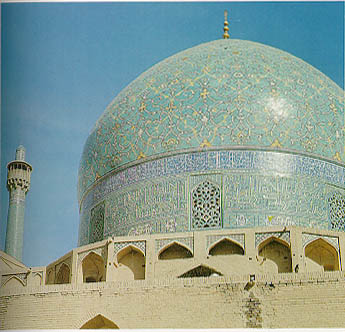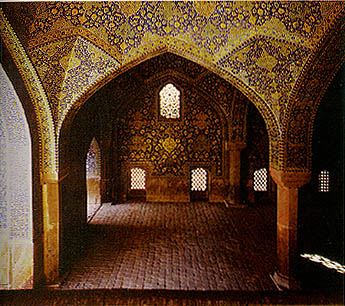
Scanned from Gardneršs Art Through the Ages, Tenth Edition
allahallahThis dome is an example of one of the most brilliant uses of colored tile. The design of the spiraling tendrils envelops the dome without overpowering it, and adjusts beautifully to its shape. In contrast to the more general Islamic tendency to disguise the structure, here the tile enhances the dome's form without obscuring it. This is witnessed also on the minarets.

Scanned from Gardneršs Art Through the Ages, Tenth Edition
allahallahThe architectural forms resemble tentlike canopies, and the starlike spangling of the floral motifs on their surfaces evoke the constellations of a night sky. The glazed tilework is so refined that it obscures the woven textiles that adorned the tents of the Safavid monarchs of Persia. Click here to see more forms of Islamic decoration.